Sheep care in winter
Sheep are kept in a stable during the winter. Hence the name "stall period". Keeping any animals in the cold season means equipping a warm room with a good ventilation system and providing pets with a sufficient amount of balanced food. Approximately 4 weeks before the transfer to the stall, it is necessary to carry out preventive measures related to examination, deworming and vaccinations.
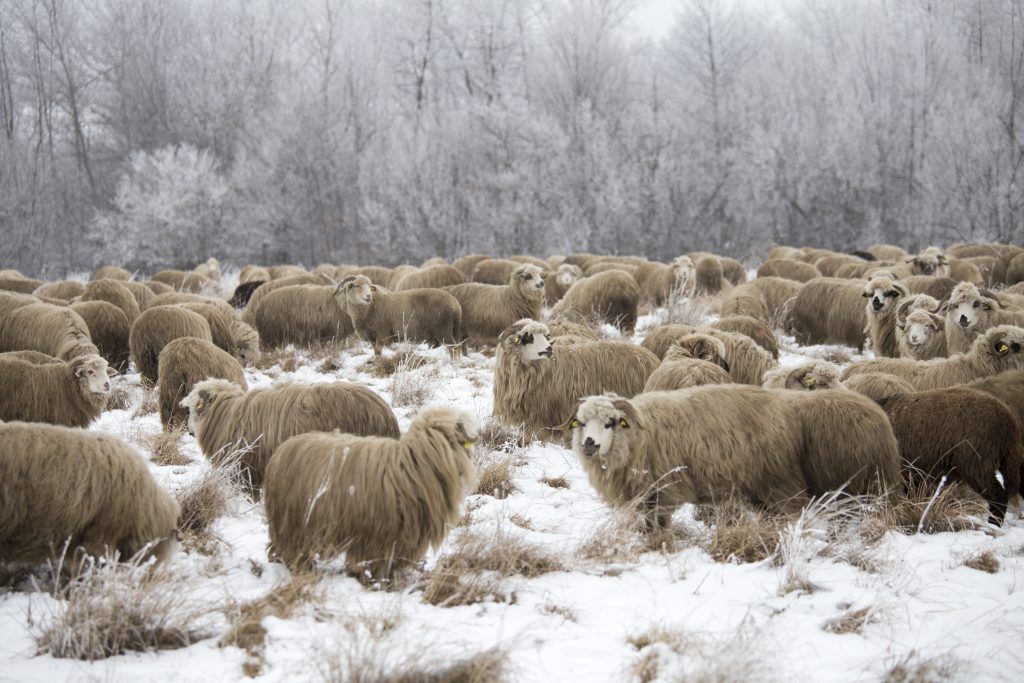
Winter sheep care
Barn
The first step is to prepare a room in which the sheep will spend the winter. A soft mat is laid on the floor. It is recommended to use hay or straw. Sawdust will not work because it will contaminate the fur too much. The litter is renewed every day by simply adding more straw. The key to good immunity of sheep is maintaining the hygiene of the room and the feeders.
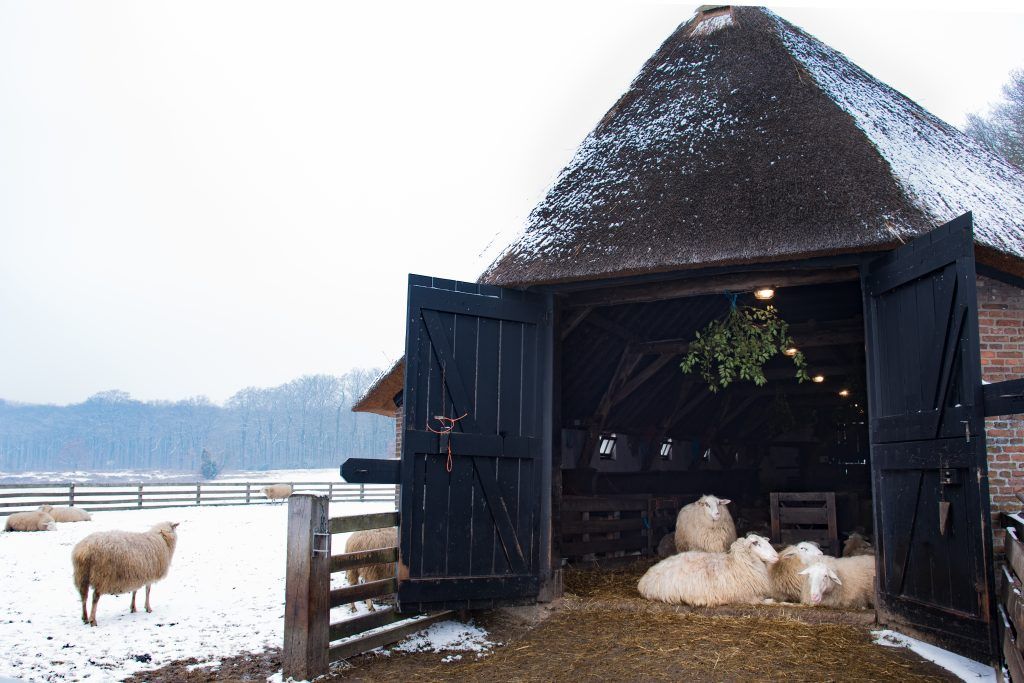
Sheep room
Inadequate room hygiene leads to contamination of the wool with manure, and can also lead to infection with worms. To make it easier to collect manure, you should make the floor in the room with slats and automate the removal of feces.
The flooring is most often made from wooden planks. Near large sheep farms, they will equip a special storage for manure. It is located no closer than 60 m from the premises where the sheep are kept, and the outbuildings in which people live.
The walls of the room are insulated from the inside and outside with sheets of plywood, carefully filling up all the cracks so that there are no drafts. Also, the barn must be equipped with a ventilation system. The supply and exhaust system, which can be designed independently, has proven itself quite well.
Inspection
Keeping sheep in winter involves constant examination of the animals. Zootechnicians should inspect the sheep. All suspicious animals are selected for a more detailed examination and redirected to the veterinary clinic.
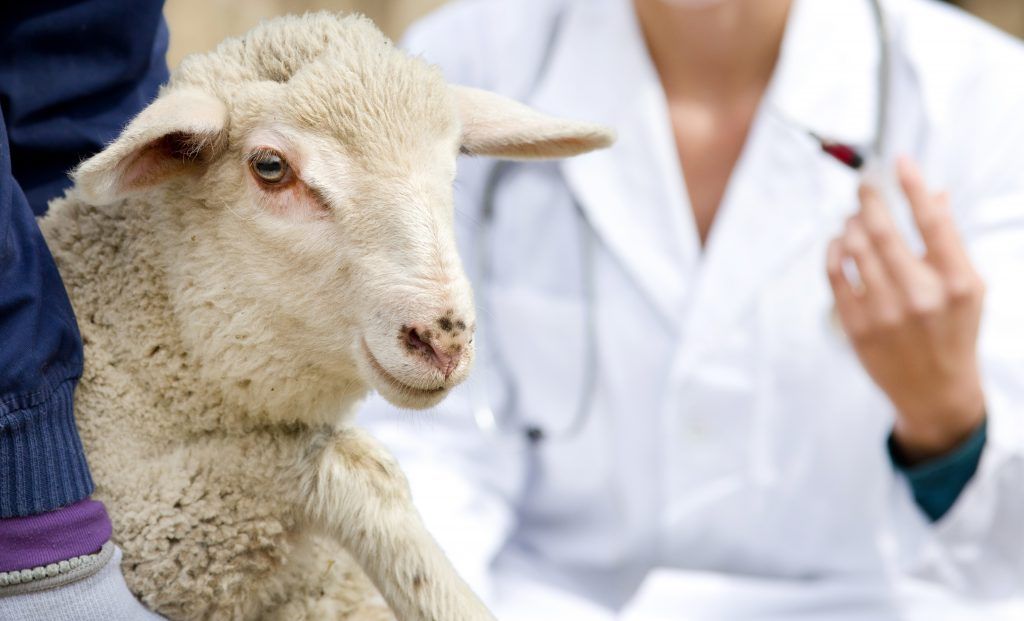
Sheep inspection
In the veterinary clinic, a therapeutic course is carried out, and then all individuals are sent to slaughter in a special sanitary facility. The meat of all representatives slaughtered in the winter is sent for veterinary examination in a special laboratory. Only after the conclusion of experts can meat be sold or used for their own purposes.
Mode
Keeping a flock in the winter implies the implementation of all actions according to a specific schedule. The transition from free-range summer housing to the stall method negatively affects the behavior of the animals. When a sheep is constantly under stress, it becomes aggressive and loses its appetite.
The exit from the premises is equipped from the leeward side of the building. In the early morning, rams and sheep are raised. They are gradually taught to low temperatures. If basic rules are not followed, the entire flock can get sick with respiratory diseases.
When the lambs leave the barn, it is necessary to control their movement in order to prevent crushing.During the exit from the barn, a superficial examination of the animals is carried out in order to identify sick individuals. Throughout the day, the flock is grazing in a specially fenced enclosure. In the evening they are driven back into the room, while an additional inspection is carried out. During winter maintenance, hygiene procedures are carried out:
- hoof trimming;
- shaving off the fur around the eye sockets as needed.
Satisfaction
Feeding sheep in winter means increasing the amount of fortified feed. Silage and hay are added to the diet when there is not enough grass in the meadows. Most often, in winter, sheep grazing is carried out on frozen forest log cabins.
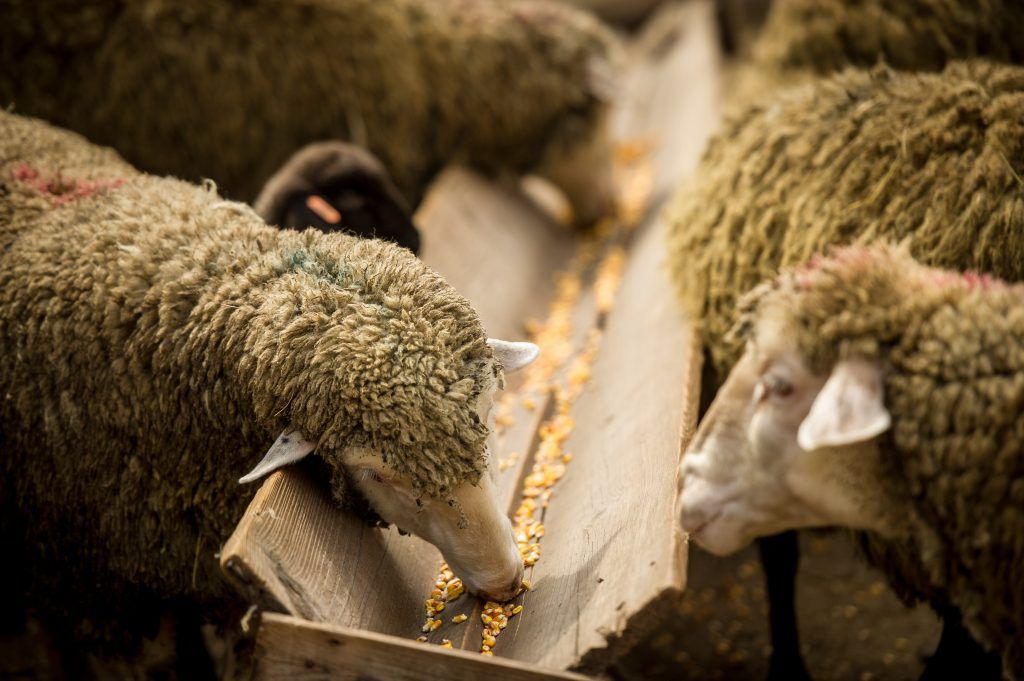
Feeding sheep in winter
It is recommended to carry out feeding in the fresh air. For this, a nursery up to 4 m in length is equipped on the walking area, at the rate of 1 nursery per 25 individuals. It is important to arrange the feeders and calculate the place so that all animals have free access to food, otherwise the weaker representatives will starve, and as a result, an epidemic of colds will begin.
The body of sheep in winter should receive a sufficient amount of food, because the cost of heating the body goes more. Full adaptation to winter maintenance takes 10 days. The transfer of flocks to winter rations takes place alternately for all individuals:
- replacement young growth;
- males;
- sheeps;
- representatives selected for slaughter.
Arrangement of feeders
In order for the flock to survive the winter calmly, it is necessary to equip two-sided nurseries on the walking area several months before switching to winter mode. Concentrated dry feed is put in one part, and hay is laid in the second. Separate feeders can be:
- nursery;
- pan;
- gutter.
The nursery is designed for hay, straw and silage. They represent the legs, between which the bottom of the boards, the grooved part and the grates are fixed. The sieve is installed at an angle to the inner side, leaving a gap of 10 cm between them. The sieve and the trough are used for concentrated feed. Rashtak is an oblong trough, standing on legs. For raising lambs, the leg height should not be more than 120 mm. The trough is a simple trough, set on the floor, 12 cm deep, about 3 m long.
It is very important to install drinkers. All equipment for drinking and feeding should be mobile so that the breeder has the opportunity to move it from place to place. In severe frost, it is impossible to feed and water animals on the street. They drink only warm liquid, and put as much food into the feeders as the animal will eat.
Feed rationing
One of the most important questions that all breeders are interested in is how much hay is needed for the winter. For 1 individual you need to prepare:
- 200-250 kg of dry grass;
- 300-500 kg of silage;
- 20-25 kg of concentrated dry feed.
The compound feed can be bought ready-made. It is available in briquettes or granules. On the one hand, it is convenient, but such feed will require 30% more than prepared independently. When feeding dry food, you will have to give the sheep more water. The diet will depend on the breed, sex and physical condition of the individuals.
Keeping pregnant females
Often, pregnancy or childbirth falls in the winter. The queen should receive only high-quality balanced food. And after giving birth, the uterus needs special care and a sufficient amount of succulent food to be able to feed their offspring.
A sufficient number of root crops must be introduced into the diet of queens in winter. It is recommended to give sugar beets, potatoes, carrots and cabbage leaves. These vegetables contribute to accelerated lactation.
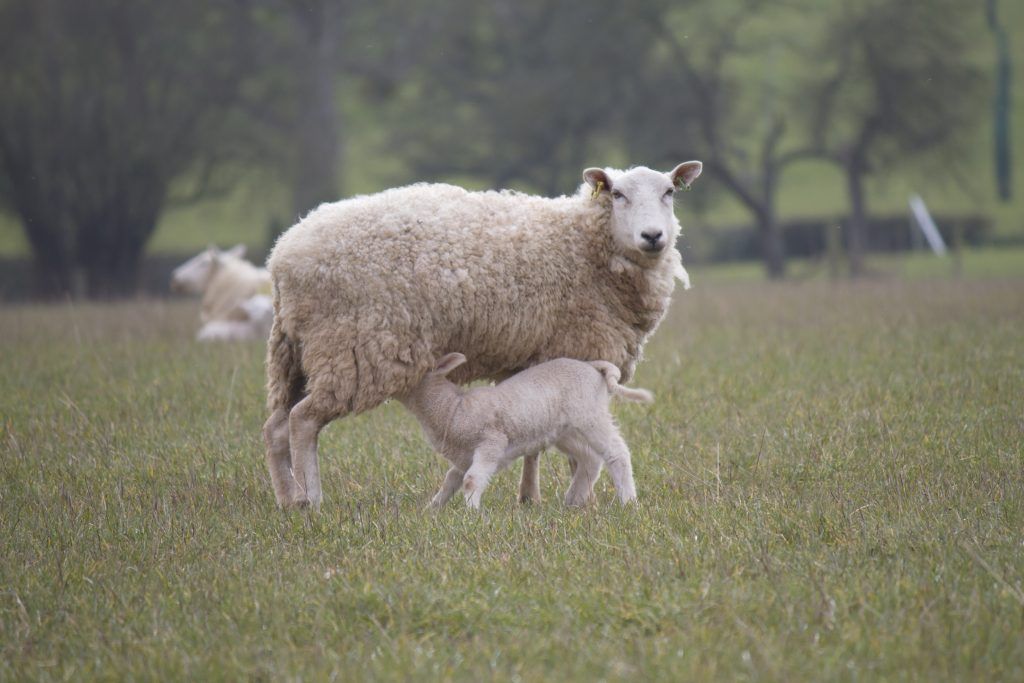
A lactating sheep needs special care
A lactating sheep needs a sufficient supply of warm drinking water.In winter conditions before giving birth, it is important to provide additional heating of the room in which the lambs and the uterus will be kept. All walls and the roof must be insulated in advance, and in the far corner, equip a special place for the kids, covering it with warm rags.
Keeping young animals
When lambs are born in winter, the fattening will fall just at the end of the winter period, so you need to think in advance about rearing young offspring and prepare separately balanced feed for it. It is customary to make special feeding troughs for lambs. The sheep feeds the lambs with milk for about 2 months. In the first month, in parallel with breast milk, they begin to give a little dry concentrates, gradually increasing their amount.
When transferring lambs to adult feed in winter, there may be problems with the routine, so it is best to initially accustom the animals to feeding by the hour. At first, the frequency of feeding is 5 times a day, from 2 months of age the lambs are transferred to 2 meals a day. Dried herbs and legumes are gradually introduced into the diet of babies after compound feed.
In winter, in good weather, you need to let the kids go outside. An important point is the vaccination of young animals. Preventive deworming is performed before it.
Final part
At home, it is important to provide the rams with free range. They feed the herd on the street in the corral. To do this, nurseries and drinkers are equipped on the walking area. All containers for feeding and drinking should be portable, because in cold weather it will not be possible to feed and water animals on the street.
The diet will directly depend on several factors that must be taken into account when storing feed for the winter:
- gender;
- physiology;
- age.
On average, a sheep eats about 250 kg of hay, 500 kg of silage, 25 kg of concentrates during the cold period. These are, of course, approximate figures, but for novice herders they are an excellent help in their calculations. If the birth of lambs falls in the winter, you need to leave the highest quality feed at the end of winter, because it is at this time that they are fed. In order for a sheep to normally bear and give birth to offspring, it needs to be provided with a full-fledged diet, for the most part consisting of succulent feed, represented by silage and root crops. Root vegetables perfectly stimulate lactation.
In the first months of life, it is especially important that young animals receive adequate milk nutrition. In order for the flock to feel good in cold conditions, it is necessary to gradually accustom the animals to the cold. For this, the sheep are transferred to stall keeping, while providing them with daily walking. The walking area is located on the leeward side of the building. For a more detailed acquaintance with the information, you can watch the video.

